Volume 59, Issue 6
Displaying 1-36 of 36 articles from this issue
- |<
- <
- 1
- >
- >|
Foreword
-
2011Volume 59Issue 6 Pages 6_2
Published: 2011
Released on J-STAGE: December 06, 2011
Download PDF (1776K)
Report
-
2011Volume 59Issue 6 Pages 6_3-5
Published: November 20, 2011
Released on J-STAGE: March 31, 2023
Download PDF (2039K) -
2011Volume 59Issue 6 Pages 6_6
Published: November 20, 2011
Released on J-STAGE: March 31, 2023
Download PDF (1880K) -
2011Volume 59Issue 6 Pages 6_7-8
Published: November 20, 2011
Released on J-STAGE: March 31, 2023
Download PDF (1823K) -
2011Volume 59Issue 6 Pages 6_9-20
Published: November 20, 2011
Released on J-STAGE: March 31, 2023
Download PDF (1871K) -
2011Volume 59Issue 6 Pages 6_21-23
Published: November 20, 2011
Released on J-STAGE: March 31, 2023
Download PDF (1918K) -
2011Volume 59Issue 6 Pages 6_24
Published: November 20, 2011
Released on J-STAGE: March 31, 2023
Download PDF (1820K) -
2011Volume 59Issue 6 Pages 6_25-6_28
Published: 2011
Released on J-STAGE: December 06, 2011
Download PDF (1685K) -
2011Volume 59Issue 6 Pages 6_29-6_34
Published: 2011
Released on J-STAGE: December 06, 2011
Download PDF (1773K) -
2011Volume 59Issue 6 Pages 6_35-47
Published: November 20, 2011
Released on J-STAGE: March 31, 2023
Download PDF (2038K)
Articles
-
2011Volume 59Issue 6 Pages 6_48-6_53
Published: 2011
Released on J-STAGE: December 06, 2011
Download PDF (2460K) -
2011Volume 59Issue 6 Pages 6_54-6_64
Published: 2011
Released on J-STAGE: December 06, 2011
Download PDF (1825K)
Introduction and explanations
-
2011Volume 59Issue 6 Pages 6_65-6_71
Published: 2011
Released on J-STAGE: December 06, 2011
Download PDF (2040K)
Papers
-
2011Volume 59Issue 6 Pages 6_72-6_78
Published: 2011
Released on J-STAGE: December 06, 2011
Download PDF (2103K) -
2011Volume 59Issue 6 Pages 6_79-6_85
Published: 2011
Released on J-STAGE: December 06, 2011
Download PDF (1968K) -
2011Volume 59Issue 6 Pages 6_86-6_90
Published: 2011
Released on J-STAGE: December 06, 2011
Download PDF (1928K) -
2011Volume 59Issue 6 Pages 6_91-6_96
Published: 2011
Released on J-STAGE: December 06, 2011
Download PDF (2317K) -
2011Volume 59Issue 6 Pages 6_97-6_103
Published: 2011
Released on J-STAGE: December 06, 2011
Download PDF (2031K) -
2011Volume 59Issue 6 Pages 6_104-6_111
Published: 2011
Released on J-STAGE: December 06, 2011
Download PDF (2095K) -
2011Volume 59Issue 6 Pages 6_112-6_117
Published: 2011
Released on J-STAGE: December 06, 2011
Download PDF (1834K) -
2011Volume 59Issue 6 Pages 6_118-6_123
Published: 2011
Released on J-STAGE: December 06, 2011
Download PDF (2000K) -
2011Volume 59Issue 6 Pages 6_124-6_129
Published: 2011
Released on J-STAGE: December 06, 2011
Download PDF (1823K)
Case study
-
2011Volume 59Issue 6 Pages 6_130-6_132
Published: 2011
Released on J-STAGE: December 06, 2011
Download PDF (1842K) -
2011Volume 59Issue 6 Pages 6_133-6_137
Published: 2011
Released on J-STAGE: December 06, 2011
Download PDF (1943K)
Collection of writing
-
2011Volume 59Issue 6 Pages 6_138
Published: 2011
Released on J-STAGE: December 06, 2011
Download PDF (1764K) -
2011Volume 59Issue 6 Pages 6_139
Published: 2011
Released on J-STAGE: December 06, 2011
Download PDF (1763K)
Oasis
-
2011Volume 59Issue 6 Pages 6_140
Published: November 20, 2011
Released on J-STAGE: March 31, 2023
Download PDF (1874K)
Announcement
-
2011Volume 59Issue 6 Pages 6_141-142
Published: November 20, 2011
Released on J-STAGE: March 31, 2023
Download PDF (1822K) -
2011Volume 59Issue 6 Pages 6_143-144
Published: November 20, 2011
Released on J-STAGE: March 31, 2023
Download PDF (1746K) -
2011Volume 59Issue 6 Pages 6_145-146
Published: November 20, 2011
Released on J-STAGE: March 31, 2023
Download PDF (1746K) -
2011Volume 59Issue 6 Pages 6_147-149
Published: November 20, 2011
Released on J-STAGE: March 31, 2023
Download PDF (1748K) -
2011Volume 59Issue 6 Pages 6_150
Published: November 20, 2011
Released on J-STAGE: March 31, 2023
Download PDF (1742K) -
2011Volume 59Issue 6 Pages 6_151
Published: November 20, 2011
Released on J-STAGE: March 31, 2023
Download PDF (1740K)
-
2011Volume 59Issue 6 Pages 6_152
Published: November 20, 2011
Released on J-STAGE: March 31, 2023
Download PDF (1740K)
-
2011Volume 59Issue 6 Pages 6_153-156
Published: November 20, 2011
Released on J-STAGE: March 31, 2023
Download PDF (1752K)
Editors' Note
-
2011Volume 59Issue 6 Pages 6_157
Published: November 20, 2011
Released on J-STAGE: March 31, 2023
Download PDF (1739K)
- |<
- <
- 1
- >
- >|
